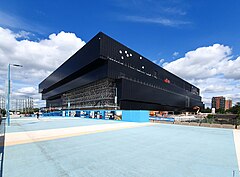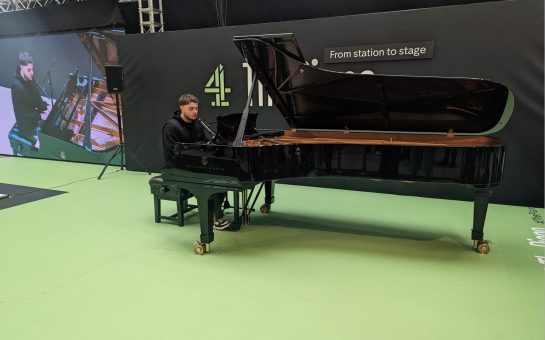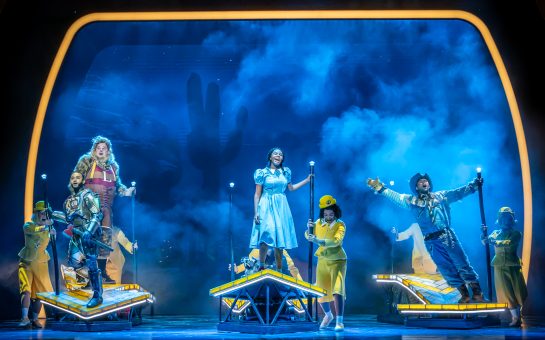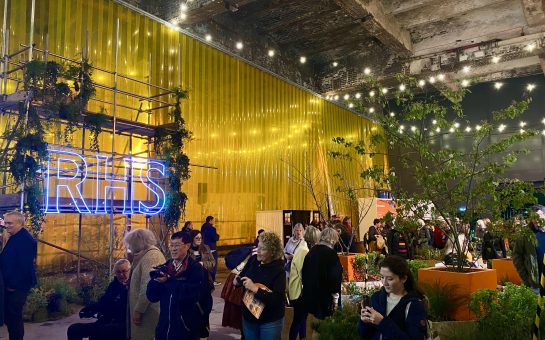There are dozens of statues and memorials dotted around the city of Manchester.
It is almost impossible to travel anywhere in the town centre without bumping into a handful.
Most of the time they go unnoticed by passers-by, but these works of art cost tens of thousands of pounds to create and the process from conception to unveiling can take years.
Clearly, then, a great deal of effort goes into producing public art.
But what can those on display around Manchester tell us about the history and the values of the city?
And what types of statues are missing?
Traditional statues of the mid-19th and early 20th century across all of Britain generally commemorate old white men.
In Manchester, as elsewhere, there are always the same two exceptions: Queen Victoria and a Cenotaph.
Firstly though, the old white men.
The statue of William Gladstone, four-time Prime Minister in the late 1800s, erected in 1901, reflects the male-centric view of history that has prevailed in public art right up to the modern day.
Similar reliefs of British statesmen such as Robert Peel, John Bright and Oliver Cromwell, which also sprang up in the 19th century, made the landscape rather staid.
One figure to buck this trend, ever so slightly, was Abraham Lincoln.
Still an old white man, but an American one this time.
Perhaps not a clear contender for commemoration in the North West of England, Manchester’s connection to the revered American President is one which continues to enrich the city’s history for the better.
During the American Civil War, Manchester’s boycott of slave cotton made many millworkers jobless, but proved significant in starving the southern states financially.
Lincoln even wrote a letter to the working men of Manchester in 1863, thanking them for their heroic sacrifice.
No monument quite recognises sacrifice like a cenotaph, however.
Unveiled in 1926, it commemorates the 22,000 Manchester soldiers who fell in the First World War.
A plaque and remembrance garden were later added in honour of those who died fighting in the Second World War.
Alongside the Cenotaph, several other statues commemorate Manchester’s war dead.
Most of these are abstract or feature everyman soldiers, noting the impossibility of depicting the tens of thousands of Mancunian soldiers who died in the conflicts.
The Tree of Remembrance is one of few monuments to civilian casualties of war, and remembers those who died in the Manchester Blitz.
During the Second World War, Manchester produced bombers and engines, making it a target for the Luftwaffe.
The city was bombed for two consecutive nights in 1940 and an estimated 684 civilians were killed.
Less intense bombing raids before and after also claimed scores of lives.
One of the most recent additions to war memorials, is the Victory Over Blindness statue.
This was commissioned to mark the centenary of the First World War.
It depicts seven soldiers who were blinded during fighting, and their likenesses are based on real veterans to who this happened.
It is one of very few statues in the UK to represent those with disabilities, and the only one in Manchester.
Works like these express a clear anti-war sentiment and bring the reality of warfare to cities in peacetime.
Queen Victoria, the most common subject of statues in the UK, had to have one in one of the countries biggest cities.
She even sat for the artist who planned the work to mark her diamond jubilee in 1897.
The statue was not unveiled until four years later, by which time the Queen had died.
Still, this statue has remained a formidable part of Manchester’s landscape for well over 100 years, and for a similar span of time was the only statue of a real woman in the city.
Recent additions to Manchester’s streets are more reflective of the society within which they exist, although a male bias is still painfully obvious.
A statue of Alan Turing, the war hero who helped to crack the Enigma code, and who was posthumously adopted as a gay icon, resides in Sackville Gardens in Gay Village.
Turing is shown with an apple in his hand, alluding to the mythologised account of his suicide from eating an apple laced with cyanide.
After Turing’s successes during the war, he began working in Manchester, making further steps in the development of modern computing.
He was prosecuted for gross indecency after revealing to police that he was involved in a homosexual relationship and ordered to take injections which lowered his libido.
Two years later he was found dead in a suspected suicide.
Turing was granted a royal pardon in 2013, and in 2017, under the ‘Turing Law’ thousands of other gay men were similarly pardoned.
The unveiling of his statue in 2001 in what had already been a thriving gay district since at least the 1980s, marks changing attitudes towards homosexuality in Manchester, and the country at large.
The statue of Emmeline Pankhurst unveiled in 2018 remains the first statue of a historical female since the statue of Queen Victoria.
That’s a gap of 117 years.
Generations of Manchester girls becoming women, growing old and passing on, and in their lifetimes the only woman commemorated in their city was recognised simply because she was born into royalty.
In that time, more statues were made to commemorate Vimto, than women.
A study by New Statesman in 2016 found that less than three percent of the UK’s statues are of historical, non-royal women.
Pankhurst’s statue therefore acts as a reminder of the need for (much) more female representation in statues in the city.
It is fitting that a glass ceiling breaking statue celebrates a woman whose life work was smashing glass ceilings.
The Women’s Social and Political Union, which would later become the Suffragettes was founded at the Pankhurst family home on Nelson Street, Manchester.
Through militant direct action, civil disobedience, and hunger strikes, this group fought for a woman’s right to vote.
It would seem that Pankhurst was not a controversial choice for a new statue.
As her statue was being erected, people were beginning to reckon with the legacy of those that had stood for decades.
Following the toppling of a Bristol statue commemorating slave trader Edward Colston, heat has been turned on some of Manchester’s statues as the city grapples with historic wrongs.
In June, the city council announced it would review all of the statues in its city.
Given the generation gap between modern Mancunians and those who supported the erection of contested statues, the values of the two groups are unlikely to be totally aligned.
Certain works seem obviously anachronistic in today’s society; the decision to remove a statue of a kneeling Black slave from a stately home in Altringham seems cut and dry.
However, rather than protesting the continued existence of the Robert Peel statue on the grounds that Peel’s father (a man born in 1750) supported slavery, it would be more productive to petition for more diverse statues to be produced going forward.
Of course, many people have petitioned for exactly this, and have had some successes.
The statue of Pankhurst only came about following a year-long WoManchester Statue campaign.
Even modern statues which at first glance seem to diversify the city have been met with criticism.
The statue of Mahatma Gandhi, unveiled in 2019 outside Manchester Cathedral, faced backlash from students who believed that Gandhi’s history of racism and complicity with British Imperialism in Africa should not warrant a statue.
Manchester’s statue covered streets provide a microcosm of Britain which shows the changes in the public mood of a country over the centuries.
The earliest statues, bronze and marble men on high plinths, push an elite view of history, concerned with the affairs of a very select group which is not, and never was, representative of the society in which they were erected.
In recent decades, a more diverse range of works have been unveiled, commemorating those outside the straight white male mould. Evidently, there is more to be done.
As far as can be discerned, there are currently no statues of real-life Black people in Manchester (there is a statue of four Black jazz musicians in Trafford Centre but none of them are named).
Turing represents the only statue of an ‘out’ gay man, and there are just two of real-life women.
Public art has the ability to immortalise people, ideas and events that might otherwise slip into obscurity.
In future years, wouldn’t it be great if new statues unveiled in Manchester address an imbalance that has persisted for centuries.
Other art forms are starting to catch up; film, music and television are platforming more diverse subjects.
It is long overdue for Manchester to follow suit and put diversity on a pedestal.



